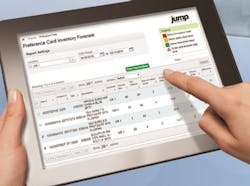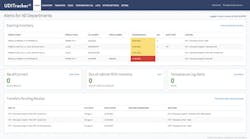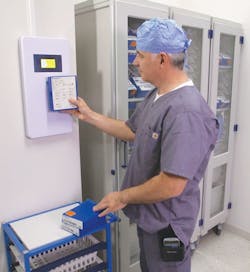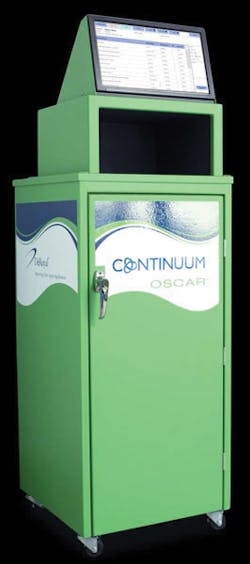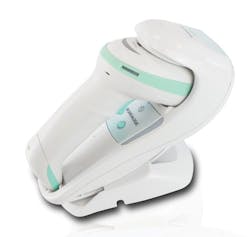If your healthcare facility has yet to invest in a real-time inventory control and tracking system for managing surgical supplies and devices, then your operating rooms, supply chain, billing and other affiliated departments — as well as your patients — are missing out on some very significant benefits. Think of it this way: If you hopped in your vehicle and started driving to an unknown destination without following a map or GPS system, you’d probably waste a lot of time figuring out how to get there, burn through a lot of unnecessary fuel and money, arrive later than planned (if at all), and feel frustrated at the end of the day. Tracking supplies and devices without today’s technological assistance is also inefficient, risky, and frustrating for everyone involved. Healthcare Purchasing News invited some subject matter experts to explore the issues and solutions related to tracking surgical products.
What makes OR-supply management so challenging?
The OR is a complex environment. The nature of care the OR clinical team provides is different than any other area of the hospital. The challenge is twofold: Hospitals must make a commitment to return the clinical team to patient care and work to integrate supply management to the Supply Chain function. However, this is difficult. In most ORs the clinical team wants to be out of supply management but does not trust Supply Chain to manage supplies in the OR. There are two reasons for this:
- Trust – The Supply Chain team, in most cases, lacks the knowledge necessary to manage these supplies as they have not traditionally gone “beyond the red line”. The clinical team feels this could lead to supplies availability issues. This gap can be closed with training, communication and time
- Data – Regardless of who is managing OR supplies there is a lack of visibility to supplies that sit in the OR. This lack of visibility extends to almost every product in the OR. Traditionally, there has not been a reliable way to track usage, set accurate PAR levels, understand true product cost, control special orders / vendor stock, gather cost per case and update preference cards (to name a few) without combining data from multiple different systems. In most cases, the data simply is not available.
Jeff Porubcansky, VP, Customer Operations, Cardinal Health WaveMark
Across all specialty areas of a hospital, the OR is the most complex environment. This is due mainly to the different types of products used for procedures—and the varying sizes and traceability requirements involved. These items have a variety of material flow requirements and are replenished in different ways, with disparate groups supporting or managing the process. Each class of item has different traceability and chain of custody requirements that needs to be documented and controlled such as UDI data for implants, sterilization lot for instrument trays and temperature control for bone & tissues. These items are constantly changing due to individual physician preferences, one-time use of trunk-stock items and trials introduced from vendors. The result is a perfect storm in which inventory visibility is lost, making items difficult—or sometimes impossible—to track.
Jean-Philippe Racette, Product Marketing Manager, Point-of-Use Solutions, Tecsys
It is a time sensitive environment. The entire tracking process is complex and relies on many departments: Tracking at the time of use, then decontamination/washing, assembly/sterilization, restocking, inspections, and repairs. A variety of other factors come into play as well:
- Different instrument demand for different procedures, including unplanned emergency procedures.
- Surgeon instrument preferences.
- The sheer volume of set types and instrument sets.
- Contamination of other instruments if not cleaned properly.
- Fast room turnover to prepare for the next surgery on schedule.
Andrew Cauthorn, Marketing Specialist, Datalogic
Tissue and device implants are a special category of supplies that have particularly high and evolving standards for tracking. Many hospitals track tissue and device implants via manual or homegrown methods, such as on paper, in binders, or through Excel spreadsheets, or simply lack any processes to track implants across their lifecycle. Using a manual approach, either writing or typing in product information from a label, leaves considerable room for human error/risk. Product digits may be missed or illegible, team members may interpret product codes differently, or staff may not document a product code at all.
Peter I. Casady, CEO & Co-Founder, Champion Healthcare Technologies
The OR is also considered one of the costliest departments to stock. Why?
Hospitals haven’t historically managed inventory, they’ve managed spend. And most ERP systems today are designed to help hospitals buy materials properly, not manage them once they have been received. This has led to the same issues of overstocking, high labor and expiration waste problems that exist in other areas of the hospital. The difference is that the value of inventory in the OR is much higher, which greatly amplifies the cost of capital tied up in OR inventory and waste.
Another driver of cost in the OR is the fact that most clinicians pull inventory today for procedures tomorrow. If they suddenly find they don’t have what they need, they either have to reschedule the procedure or compromise on the materials being used, which can impact patient care, satisfaction and cost. Studies have shown that as much as 40 percent of physicians have cancelled surgeries and 69 percent have rescheduled due to a lack of available inventory.
Consignment items and trunk stock are also hidden drivers of cost for hospitals as they have no way to track this inventory. With consignment stock, the hospital is at the mercy of the vendor to tell them what they have used and will be charged for. Hospitals trust their vendors to get this right but mistakes can happen, leading to unnecessary costs for the hospital. And with trunk stock, a lack of synchronization between the item masters and charge masters means that hospitals miss up to 30 percent of the charge capture that should be happening inside the OR.
The biggest cost impact, however, comes in the ability to address physician preference items as well as how these items are used. Navigant recently pointed to over $24 billion in waste that is happening in hospitals today due to a lack of standardization of items. According to that report, the average hospital can reduce cost by as much as 18 percent if they standardized on items. Hospitals need data that will give them an understanding of these variances, so they can study them and determine how to standardize to deliver the best outcomes for the patient and the hospital.
John Freund, CEO, Jump Technologies
Fundamentally, many hospitals lack the right tools at the point of care to capture and track supply usage during procedures. This incomplete consumption data leads to an inaccurate overall picture of product utilization and replenishment demand.
A lot of products used during the course of treatment are slow-moving items; they have low inventory turn rates and high unitary costs. The catch for these slow-movers is that when they are indicated on a list of physician preference items, they must be reliably available for specific surgeries and stored on site. However, they tend to be forgotten over time when procedural requirements change and physicians move on from the organization. As a result, a great deal of money is left sitting on shelves, potentially freezing capital and increasing the risk of using expired product.
Racette/Tecsys
Given the many touchpoints where product information needs to be recorded (upon receipt, transfers, point-of-care, etc.), as well as the sheer volume of implants needing to be recorded each day, manual entry adds considerable time to staff’s workflows.
Manual tracking requires supply chain or other staff to review inventory, item by item. This is a time-consuming, unreliable process, leaving room for considerable product waste and write-offs. As a worst-case scenario, staff may also completely miss expired product, keep it on the shelf, and unknowingly implant expired product into a patient.
Casady/Champion
Why do you think so many hospitals struggle with managing expired products in the OR?
Hospitals struggle with expired products in every department. However, the different between the type of care procedural and OR areas provide vs. a general patient care area make an expired product more noticeable, problematic and impacting (this goes without saying: any expired product, in any area of the hospital, is a major issue). The largest (not the only) root cause of an expired products in the OR is overstocking. Without the usage data needed to make educated decision around product PAR levels products are often stocked according to “emotional stocking”. This is where a product’s PAR is set, and orders are affected by the feeling of the staff vs real usage data. This can also lead to hoarding or stockpiling products because there have been supply disruption issues or clinicians have run out to this product in the past. In addition, once products are over-ordered, stockpiled or picked and not retuned products make it difficult to track expirations dates. The staff responsible for maintaining supplies loses visibility to the product and its expiration date either because the product is not in its original location or product rotation because impossible because of the volume of product.
Porubcansky/Cardinal Health WaveMark
According to one estimate, between 10 and 15 percent of all hospital supplies expire before they are used, either from material degradation or because the sterility of the product is no longer assured; these losses may cost as much as $5 billion a year.1 Better management of the supplies including improvements in resource utilization before supplies are outdated can save organizations significant money.
Manually sifting through thousands of supply items to remove the outdated ones is often a manual process. Many items in the surgical setting are used routinely and seldom expire. Others are seldom used but need to be available in case of emergency. These are the items that are at greatest risk of expiring before use. This may seem like a rare occurrence, but it is not. In fact, 27 percent of surveyed clinicians had seen or heard of an expired product being used on a patient.
Erin Kyle, DNP, RN, CNOR, NEA-BC, Perioperative Practice Specialist, Association of periOperative Registered Nurses (AORN).
What would you say to the healthcare facility that may still be on the fence about investing in an automated, real-time tracking system for the surgical suite?
Personnel who are tasked with pulling cases who have access to clear instructions for the needed supplies and actually find all the needed items on the shelf benefit from this technology. When these systems work, supplies won’t be missing because the system knows in advance what supplies are needed and shelves are stocked according to this need.
Perioperative teams who are setting up for the surgical procedure can trust that the supply items called for on the preference card have been pulled accurately. With integrated systems, perioperative nurses can spend less time entering charges for supplies used in the operating room and more time with the patient.
Fully integrated systems that include tracking supply and device expiration dates can be protective from the inadvertent use of an expired supply or implant in surgery. Good tracking systems will alert materials management personnel to the pending outdate so it can be removed from service. Additionally, when the end-user scans the item at the point of use, the system alerts the end-user that the item is expired before it is too late.
All of these together translate into more efficient care delivery in the perioperative setting. This can be especially important when there is little time to plan and prepare for an emergent procedure. Accuracy in preparedness can mean the difference between a good outcome and a disastrous one.
Kyle/AORN
“Change is often difficult for most people, but for perioperative teams, it is a way of life. Perioperative professionals are usually quick to accept technologies that they trust when they think that they will work for them and give them more time with patients. Innovations that place clinicians at the patient’s side more of the time with the right resources available when they need them are generally welcomed in the operating room.”
Meaningful Use Stage 3 will require the capture of UDI data for all medical device implants in EHR systems. Strict tracking requirements also exist for tissue implants. Only through diligent tracking of implants can a hospital meet Joint Commission chain of custody requirements for tissue implants. Similarly for device explants, while simultaneously improving patient safety and reducing the costs of tracking.
Casady/Champion
An inventory tracking system can be expensive, although, in the long run, the cost is less expensive than losing surgical supplies or leaving an instrument in a patient. Real-time tracking means you can bill real-time directly to a patient chart, as underreporting on medical supplies used could affect future reimbursement rates.
Cauthorn/Datalogic
Are you ready for the journey needed to undertake supply management in the OR? Do you have the support of clinical staff, IT, leadership, your distributor, your supplier partners, your contracting and VAT committees and a realistic understanding of what success looks like? This is as much of a cultural journey as it is a math exercise. There are so many hospitals that start this journey with “dirty” data, inaccurate preference cards and no champion. This is not meant to scare facilities that are still on the fence about starting a journey into supply and workflow management using technology. The work is hard, the journey is long, and the efforts are time consuming, but the future is well worth it.
Porubcansky/Cardinal Health WaveMark
Explain why your tracking technology is a good investment — what would you want supply chain, clinical and value analysis teams to know about your product?
Our JumpStock platform integrates with a hospital’s EMR or scheduling system to be able to see scheduled procedures and the preference cards associated with them. This allows hospitals to forecast demand based on current inventory, velocity, and lead times from suppliers. This greatly reduces the cancelling or rescheduling of procedures due to stock outs. It also greatly reduces the chance that physicians will have to compromise on materials being used because of stocked out items.
The JumpStock solution provides actionable analytics that help supply chain and clinicians work together to manage inventory based on consumption data, freeing up cash by having the proper amount of inventory on the shelves while avoiding stock outs. JumpStock delivers data about cost per procedures and physician utilization to identify clinical and operational variances. This data can be used to standardize on materials, improve purchasing power and save money.
JumpStock also can identify trunk stock and consignment items when scanning GS1 codes for items not found in the item master, then save that data and present it to administration so cost and charge data can be recorded and billed to the case. JumpStock delivers cost per procedure and physician utilization data that can uncover clinical and operational variances. This data can also be compared against patient outcomes and presented to physicians in an effort to standardize on materials, leverage purchasing power, and potentially save the hospital up to 18 percent.
Freund/Jump Technologies
Customers invest in Champion to automate implant tracking, optimize inventory management and reduce waste, reduce organizational risk, and above all—support patient safety and drive better care. Champion’s customers have experienced 50 percent to 90 percent time savings across receiving, tracking, documenting, and reporting of tissue and device implants, reduced inventory costs by 1 percent, experienced 70 percent time savings on regulatory audits/investigations, and Champion’s customers have reduced the time spent on recall response and management by 70 percent.
Champion’s UDITracker uses existing UDI barcodes for tracking implants and is compatible with all FDA accredited issuing agencies: GS1, HIBCC, and ICCBBA. Using existing UDI barcodes serves a large advantage, as it avoids the practice of re-labelling. Re-labeling adds an additional layer of risk for an organization due to the potential for human error (e.g., inputting wrong or incomplete DI or PI codes)—ultimately compromising patient safety.
With more than a decade of experience with nearly 500 hospitals, GPOs and government agencies, and over 98 percent customer retention over 12 years, Champion’s core products UDITracker and WarrantyTracker are trusted by industry and partnering vendors.
Casady/Champion Healthcare Technologies
By implementing technology that automates traditionally manual or error-laden processes, one customer that comes to mind gained thousands of clinical hours, cut materials management time spent on replenishment in half, and lowered on-hand inventory value by 30 percent. Technology can support and accelerate the adoption of new logistic practices by automating Lean inventory processes and facilitating continual optimization and error elimination. In fact, technology makes these improvements sustainable and helps tie together the workflows between clinical and supply chain.
It’s important to ensure the system can evolve over time. The right solution should also offer differentiated replenishment practices and data-capture technologies depending on the supply type, process cost, and clinical involvement required. It is also essential for the tracking technology and inventory management application to support the entire health system. The Tecsys system was designed to enable all of this.
Racette/Tecsys
Continuum employs Radio Frequency Identification technology (RFID) in tandem with our proprietary hardware and software solution to drive automation. Instead of relying on the clinicians to document product-specific information — quantity used, expiration date, lot number, and serial number — Continuum captures that information downstream in the supply chain upon product receipt. At the point of care, clinicians realize a simplified process of merely disposing of the RFID-tagged products into Continuum’s smart trash receptacle.
DeRoyal leverages GS1 standards for product identification. Continuum extracts the Device Identifiers from each product’s barcode and uses RFID to track the product and its identifiers as the product moves through the hospital supply chain until it is used on a patient. Continuum’s RFID technology is also based on GS1’s standards so as manufacturers begin to apply RFID to products; they will automatically be tracked from receipt to point-of-use at the facility.
Using RFID technology and robust software solutions generates an unprecedented amount of data that can be analyzed and applied to solve many challenges within a health system. In a study performed by Continuum, standard clinical documentation practices took an average of 20 minutes per case to complete. With Continuum, this process can be completed in just a couple of minutes. One facility studied documented each item used during a case with a pen and paper. Using Continuum, they were able to reduce nursing time spent on this activity to an average of only 30 seconds.
With Continuum, clinicians open their items and discard via the Continuum OSCAR, a smart trash receptacle, which automatically captures product information including cost, quantity used, and the UDI details. Simply Pick It. Use It. Throw It Away. Continuum also reports this information directly to the Electronic Health Record for seamless charge capture.
Hailey Meadows, Continuum Account Manager, DeRoyal
Not only does Datalogic offer bar code readers and an RFID system, but it also uses lasers to etch bar codes into surgical supplies. Bar code scanners and RFID systems reduce a task from taking minutes to seconds. Datalogic hand held scanners for healthcare applications are one of the few offering both anti-microbial and disinfectant-ready plastics. You can clean the plastics with the harshest cleaners found in a hospital without the worry of damaging the plastics or the scanner’s interior electrical parts. The anti-microbial side mitigates the spread of bacteria that cause costly hospital-acquired infections. Datalogic is also the first company in the industry to offer products with inductive charging (wireless or contactless charging). Purchasing and valua analysis teams should know that we can match any offer from any scanner company.
Cauthorn/Datalogic
Did customers experience any ah-ha moments after implementing your technology?
At one facility, Continuum identified costly accidental product usage trends. The clinicians were opening and using a rotating head stapler for every case instead of a standard stapler which is a costly substitute. Without Continuum, the item would have likely continued to be documented via the preference card as a standard staple, but with Continuum’s case costing and usage reports, system users were able to see what was being used and identify areas for improvement.
Meadows/DeRoyal
The fact that hospitals and health systems haven’t been managing inventory, but rather managing spend, was an ah-ha moment. The lack of process and technology has created what we call a data divide. This was another big revelation. What we realized was that clinicians think they know what’s best when it comes to ordering supplies and supply chain professionals think they know what’s best, but because they aren’t working from a common data set, they each come up with a different answer and there you have your data divide.
The sheer amount of waste from lack of inventory management was also an eye opener. Hospitals are losing millions each year due to overstocking and expired supplies. However, when hospitals use JumpStock they have the data they need to start conversations that can improve outcomes and influence best practices.
Freund/Jump Technologies
There is a misconception that an OR supply chain transformation project’s first step needs to be cleaning surgeon preference cards, followed by an inventory management project. The reality is that the sequence of these elements is not as important as the establishment of both. An updated and accurate preference card will become out-of-date very quickly without also establishing a solid OR inventory management approach. Monitoring and tracking item usage in real time provides the visibility necessary to sustain and optimize the preference cards over the long term.
Racette/ Tecsys
About the Author

Valerie J. Dimond
Managing Editor
Valerie J. Dimond was previously Managing Editor of Healthcare Purchasing News.



